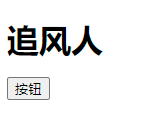目录
1. 概述
老话说的好:不用想的太多、太远,做好当天的事,知道明天要做什么就可以了。
言归正传,今天我们来聊聊 VUE 中 render 函数的使用。
2. render 函数
2.1 一个简单的例子
<body>
<div id="myDiv"></div>
</body>
<script>
const app = Vue.createApp({
template:`
<my-h>
追风人
</my-h>
`
});
app.component('my-h', {
template:`
<h1>
<slot />
</h1>
`
});
const vm = app.mount("#myDiv");
</script>这个例子中,我们用到了之前学的 子组件 和 插槽,实现了对主组件中的文字加 h 标签的功能。
2.2 依据数据,改变 h 标签
const app = Vue.createApp({
data() {
return {
myLevel: 2
}
},
template:`
<my-h :level="myLevel">
追风人
</my-h>
`
});
app.component('my-h', {
props: ['level'],
template:`
<h1 v-if="level===1">
<slot />
</h1>
<h2 v-if="level===2">
<slot />
</h2>
`
});这个例子中,我们希望依据数据 myLevel 的值,改变主组件中文字的 h 标签,1 对应 h1,2 对应 h2。
2.3 更多的 h 标签
const app = Vue.createApp({
data() {
return {
myLevel: 3
}
},
template:`
<my-h :level="myLevel">
追风人
</my-h>
`
});
app.component('my-h', {
props: ['level'],
template:`
<h1 v-if="level===1">
<slot />
</h1>
<h2 v-if="level===2">
<slot />
</h2>
<h3 v-if="level===3">
<slot />
</h3>
<h4 v-if="level===4">
<slot />
</h4>
<h5 v-if="level===5">
<slot />
</h5>
`
});我们希望可以有更多的 h 标签供选择,但显然这么写,非常的不优雅。
2.4 使用 render 函数 简化代码
const app = Vue.createApp({
data() {
return {
myLevel: 6
}
},
template:`
<my-h :level="myLevel">
追风人
</my-h>
`
});
app.component('my-h', {
props: ['level'],
render() {
const { h } = Vue;
return h('h' + this.level, {name:"myh", id:"myh"}, this.$slots.default())
}
});这个例子中,我们使用 render 函数 代替 template。
const { h } = Vue; 这句是固定写法。
return h(‘h’ + this.level, {name:”myh”, id:”myh”}, this.$slots.default())
这句中,第一个参数 ‘h’ + this.level 是标签,第二个参数 {name:”myh”, id:”myh”} 是标签的属性,第三个参数 this.$slots.default() 是标签包裹的内容
生成的标签结果如下:<h6 name=”myh” id=”myh”> 追风人 </h6>
2.5 render 函数包裹更多的内容
const app = Vue.createApp({
data() {
return {
myLevel: 1
}
},
template:`
<my-h :level="myLevel">
追风人
</my-h>
`
});
app.component('my-h', {
props: ['level'],
render() {
const { h } = Vue;
return h('h' + this.level, {name:"myh", id:"myh"}, [
this.$slots.default(),
h('br', {}),
h('button', {onclick:"alert(123)"}, '按钮')
])
}
});render 函数中 h 函数的第三个参数,可以是数组,例如上面的例子,生成的结果如下:
<h1 name=”myh” id=”myh”> 追风人 <br><button οnclick=”alert(123)”>按钮</button></h1>
3. 综述
今天聊了一下 VUE 中 render 函数的使用,希望可以对大家的工作有所帮助,下一节我们继续讲 Vue 中的高级语法,敬请期待
欢迎帮忙点赞、评论、转发、加关注 :)
关注追风人聊Java,这里干货满满,都是实战类技术文章,通俗易懂,轻松上手。
4. 个人公众号
微信搜索公众号:追风人聊Java,欢迎大家关注
今天的文章VUE3 之 render 函数的使用 – 这个系列的教程通俗易懂,适合自学分享到此就结束了,感谢您的阅读。
版权声明:本文内容由互联网用户自发贡献,该文观点仅代表作者本人。本站仅提供信息存储空间服务,不拥有所有权,不承担相关法律责任。如发现本站有涉嫌侵权/违法违规的内容, 请发送邮件至 举报,一经查实,本站将立刻删除。
如需转载请保留出处:https://bianchenghao.cn/60849.html


